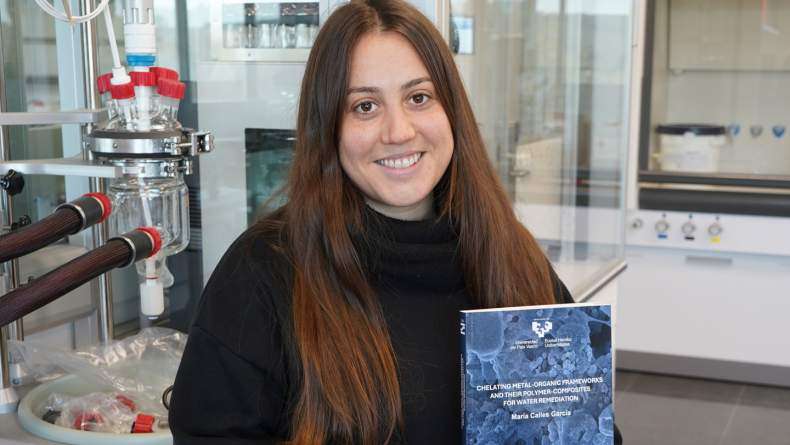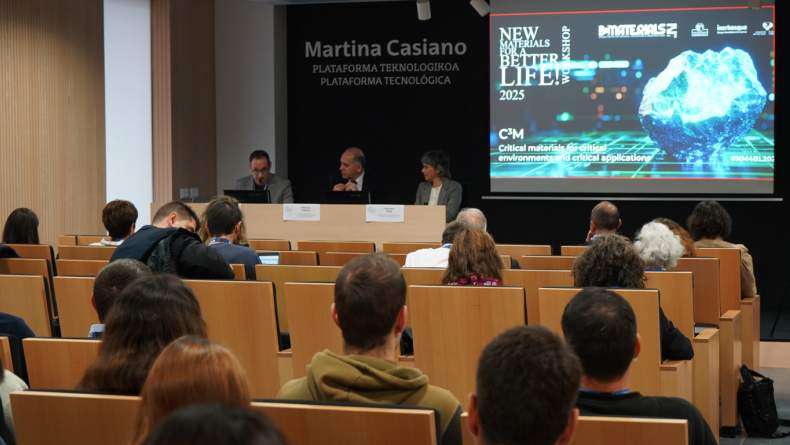BCMaterials Fortnightly Seminars #14

[break]
“Permalloy nanodisks prepared by colloidal lithography for biomedical applications”
Maite Goiriena
Magnetic nanoparticles are extensively studied for biomedical applications because their size are comparable to biological entities, while providing remote capabilities of actuation. Disk shaped ferromagnetic nanostructures display an attractive alternative to chemically-synthetized oxide nanoparticles that are used normally. First, Permalloy (Py) nanodisks display much higher saturation magnetization and second, with the appropriate dimensions, they can present a spin vortex magnetic configuration, which leads to net zero magnetization at remanence, eliminating the problem of particle agglomeration. Therefore, Py nanodisks present a huge potential for biomedical applications, ranging from cancer cell destroy by hyperthermia or mechanical actuation to MRI contrast enhancement and drug delivery. In fact, micrometric disks has been shown to produce cell apoptosis by their mechanical oscillation under a low ac field. Disks in the nanometer scale might cross cell membrane expanding the biomedical possibilities. The fabrication methods of nanostructures such as electron beam lithography or deep UV photolithography offer a high control on particle size and geometry, but they imply either a very low yield production or the use of state of the art and expensive equipment. As a satisfactory alternative, self-assembling routes provide high volume and low cost production of Py nanodisks. In this work we demonstrate the excellent capabilities of Hole-mask Colloidal Lithography (HCL) to produce high quality Py nanodisks with a yield adequate for biomedical applications (several micrograms per cm2, approximately 1 miligram in a 2´´ wafer).The parameters of HCL process allow to obtain Py nanodisks with different dimensions controlling a well-defined magnetic vortex state. Effective procedures for releasing the fabricated nanodisks from the substrate are under development, which will permit in vitro biomedical experiments.
“Nanocellulose for flexible electronics”
Eduardo Fernández
Summary The main objective of this investigation is to use the cellulose as substrate for electronics. The cellulose when crystalizes is opaque, however can be fabricated in a manner where are crystalized clusters with different grain sizes. In this case the cellulose is transparent. We characterize the structural properties and its dielectrical properties of the cellulose for flexible electronic applications.
Related news
María Calles, BCMaterialseko doktore berria
María Calles García zoriondu nahi dugu UPV/EHUn Materialen Zientzia eta Teknologian doktoretza lortzeagatik. Abenduaren 4an Maríak ‘Chelating Metal-Organic Frameworks and Their Polymer-Composites…Bartzelonako Mikroelektronika Institutuko ikertzaileekin hitzaldi gonbidatua (abenduak 3)
Datorren abenduaren 3an, 12:00etatik aurrera Leioako Martina Casiano auditorioan, BCMaterialsek Bartzelonako Mikroelektronika Institutuko (IMB-CNM) (CSIC) Antón Guimerà eta Xavier Illa ikertzaile…Hitzaldi gonbidatua Liu Yaorekin metal-litiozko bateriei buruz (abenduak 2)
Datorren astelehenean, abenduaren 2an, Liu Yao Shanghai Institute of Applied Physics-eko irakasleak "Li Metal Batteries: From Liquid to Solid-State" hitzaldia aurkeztuko du BCMaterials-en. Hitzaldia…BCMaterials-en urteko workshoparen arrakasta, material kritikoei eskainia
BCMaterialsen urteko workshoparen 2025. edizio arrakastatsuak ehun bat lagun bildu zituen azaroaren 19an Leioan, artearen egoera aztertzeko eta material kritikoei, materialen aplikazio kritikoei eta…



